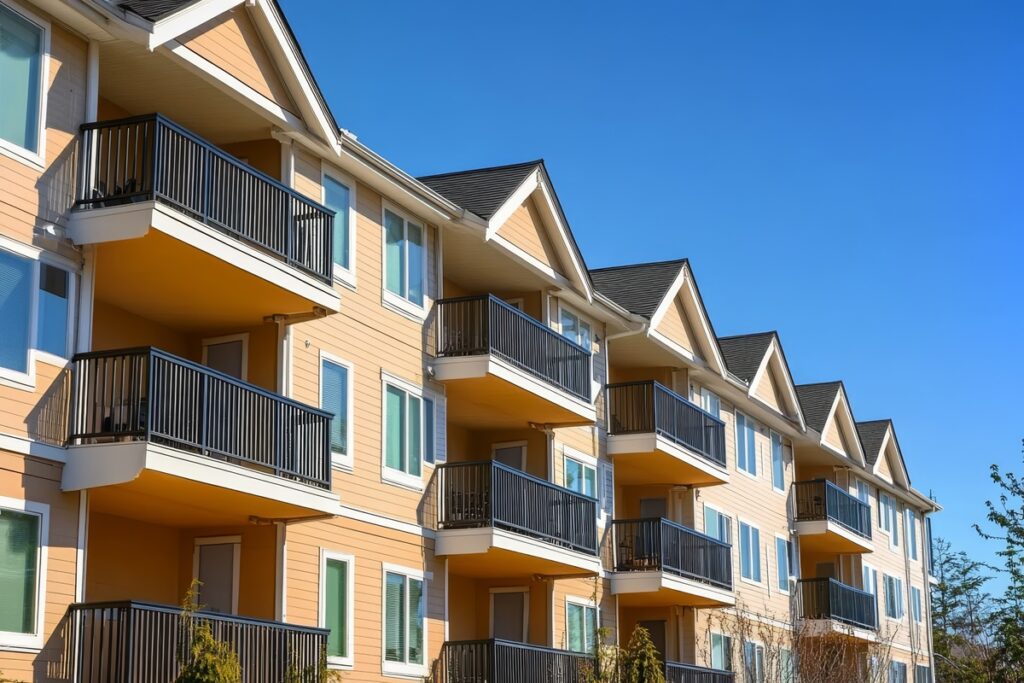The Mortgage Bankers Association (MBA) has sent a letter to U.S. Department of Housing and Urban Development Secretary Scott Turner urging the agency to consider updates to its FHA Multifamily Accelerated Processing program to lower housing costs and boost housing supply.
“FHA multifamily volume, however, is down dramatically. In FY2021, FHA issued 1,685 commitments,” said MBA President and CEO Robert Broeksmit, CMB in the letter. “Last year, it issued only 816, a staggering 52% decline. Removing unnecessary rules and requirements that do not have a basis in the risk of the loan can greatly increase production and help alleviate the nation’s affordability challenges.”
The letter noted that a number of environmental requirements have been added to the MAP Guide since 2011.
“Many of these are not in any statute or regulation, add significant expense and time to multifamily projects, and limit new development,” MBA President and CEO Robert Broeksmit, CMB wrote. “We strongly encourage HUD to review the necessity of these requirements, given the high demand for housing.”
Outlining Changes
The issues mentioned in the letter include:
- Buried underground pipelines: The rule regulates acceptable separation distances (ASD) for FHA-insured projects and specifically states that buried underground pipelines are not a hazard. Despite this regulatory definition, which has remained unchanged since 1984, the MAP Guide was revised in 2020 to require new construction projects to complete a complicated impact analysis for pipelines within a one-mile radius of the proposed project. The letter states that this could cause significant problems in a number of states. The 2020 MAP Guide change has led to a significant number of new construction projects being delayed or rejected due to location in proximity to buried underground pipelines and excessive reporting/engineering costs required by HUD. The MBA suggests that the requirements for buried underground pipelines should revert to the 2011 MAP Guide requirements of all structures must be at least 10-feet from the outer boundary of the easement.
- Noise: With noise pollution being regulated as part of EPA’s Clean Air Act and 1981, the EPA concluded that noise issues were best handled at the state and local level. HUD has its own acceptability standards contained in 24 CFR Part 51 Subpart B. For new construction projects, although modern construction easily mitigates interior noise to acceptable levels, the required site-wide “noise calculated” standards lead to the rejection of projects in transit-oriented locations, less advantageous site redesign, and removal of common amenity spaces or the requirement for expensive mitigation measures, without any consideration of the actual impact of noise on the project or to the residents. In contrast, for existing projects, the CFR states “environmental noise is a marketability factor which HUD will consider in determining the amount of insurance or other assistance that may be given.” The MBA suggests that HUD’s regulation should be revised to simply require construction projects to show that noise levels will not impact property marketability.
- Fall hazards: The 2020 MAP Guide requires that “all buildings, ancillary facilities, structures or common areas, must consider the potential fall hazards from such free-standing structures,” expanding the 2011 and 2016 MAP Guide requirement of evaluating engineered fall distances for just “structures.” The MBA suggests that in order to reduce unnecessary cost to FHA-insured multifamily financing, the fall zone guidance should be revised to reflect the actual risk to the project. The MBA feels that HUD should at a minimum revise the guidance back to the 2011 and 2016 MAP Guide coverage to just “structures” and ideally remove the requirement to evaluate fall zone hazards on typical free-standing structures.
- High voltage transmission line easement: The 2020 MAP Guide requires that “No buildings, ancillary facilities, structures or common areas may be constructed or located within the easement of any overhead high voltage transmission line,” expanding the 2011 and 2016 MAP Guide requirement of evaluating engineered fall distances for just “structures.” No justification was given for this change, which applies to both existing and new construction projects. This has prevented HUD-insured financing in new construction projects where the site cannot be redesigned to move parking spaces out of the easement or required costly movement of parking spaces without any meaningful reduction in risk. The MBA suggests that HUD should revise the guidance back to the 2011 and 2016 MAP Guide prohibition to just “structures.”
- Vibration: The MAP Guide requires a vibration study for projects within 100 feet of rail lines. This costly test can eliminate properties that are close to transit, which provides benefit to the residents. The MBA suggests that vibration should only be considered when it impacts on the marketability or structural stability of the property.
- Radon: The MAP guide requirements for Radon come from an environmental review of proposed HUD supported projects. Radon is generally regulated at the state or local level. Jurisdictions where Radon is more prevalent have stronger Radon testing requirements. Fannie Mae recently changed its Radon requirements to correspond with state and local requirements. The MBA suggests that, consistent with Fannie Mae, HUD should defer Radon requirements to state and local jurisdictions.
- Migratory birds: On February 28, the Department of Interior (DOI) published a memo narrowing protections for migratory birds. HUD’s current rules prevent site preparation for new construction where trees may house migratory birds. This delay is costly and unnecessary in an area where the trees will be removed and greatly impacts on the timing of projects in impacted areas. MBA suggests that HUD should remove the requirement for environmental reviews to be completed prior to site preparation.
- 200 unit limit threshold for FECO review: Part 50 requires that even absent of any environmental concerns, assessments for projects over 200 lots/dwelling units or beds must be sent to the Field Environmental Clearance Officer (FECO) or, in the absence of a FECO, to the Program Environmental Clearance Officer in Headquarters for review and comment. This process causes significant delays and adds expense. MBA suggests the elimination of the requirement of a FECO to review and comment on environmental assessment in multifamily applications based on number of units.
- Site aggregation: The 2020 MAP Guide and CFR requires aggregation of related activities when conducting environmental reviews for multifamily projects. This means that if a HUD-insured mortgage application covers a multifamily parcel as part of a larger site, the project scope includes the multifamily parcel, plus directly related parts of the larger site, like access roads, parking, and utilities. MBA suggests to limit environmental reviews for features like access roads, parking, and utilities already on site.
- Choice limiting actions: HUD currently limits demolition and environmental cleanup of new construction projects until the completion of the Environmental Review, thus causing significant delays in construction and an impact on the financials of the project. MBA suggests that the borrowers should be allowed to begin all non-critical repairs and site preparation once the Firm Application is submitted to HUD.
- Will-Serve Letters: Requests for will-serve letters by HUD offices have increased dramatically. While letters from utility providers such as water, sewer, and gas companies confirming their ability to provide service are required with the submission of the firm application and updated letters are required at closing, HUD environmental staff are now requiring letters earlier in the process, as well as letters from fire departments, police stations, and school districts. The MBA believes in maintaining the requirement to provide Will-Serve Letters from utilities at firm application and do not allow environmental staff to require documentation that is not required.
Click here for more on the MBA’s letter to HUD regarding streamlining of the FHA Multifamily Accelerated Processing (MAP) program.








